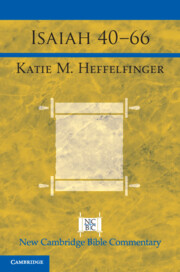Refine search
Actions for selected content:
116 results
Chapter 4 - Formation and types of companies
-
- Book:
- Contemporary Australian Corporate Law
- Published online:
- 11 September 2025
- Print publication:
- 25 September 2025, pp 108-140
-
- Chapter
- Export citation
Physical Education Teacher Education Students’ Perceptions of Competencies for Sustainable Development in Their Degree Program
-
- Journal:
- Australian Journal of Environmental Education , First View
- Published online by Cambridge University Press:
- 20 June 2025, pp. 1-16
-
- Article
-
- You have access
- Open access
- HTML
- Export citation
4 - Negotiation and Formation of the Contract
-
- Book:
- Music Contracts in the Streaming Age
- Published online:
- 09 January 2025
- Print publication:
- 23 January 2025, pp 125-165
-
- Chapter
- Export citation
2 - Sign Articulation Accuracy
-
- Book:
- Improving Your British Sign Language
- Published online:
- 02 January 2025
- Print publication:
- 16 January 2025, pp 7-84
-
- Chapter
- Export citation
7 - The Small-World Spectrum: Using Small Worlds to Compare Networks
- from Part II - Language
-
- Book:
- Behavioral Network Science
- Published online:
- 08 November 2024
- Print publication:
- 19 December 2024, pp 101-115
-
- Chapter
- Export citation
7 - Pedagogy of hospitality
- from Part 1 - Pedagogies for all
-
-
- Book:
- Teaching to Transform Learning
- Published online:
- 25 October 2024
- Print publication:
- 05 December 2024, pp 105-120
-
- Chapter
- Export citation
New SIMS U–Pb zircon age on the macroscopic multicellular eukaryotes from the early Mesoproterozoic Gaoyuzhuang Formation, North China
-
- Journal:
- Geological Magazine / Volume 161 / 2024
- Published online by Cambridge University Press:
- 23 September 2024, e2
-
- Article
-
- You have access
- Open access
- HTML
- Export citation
Extrapolation of Aqueous Dissolution Data to Determine Comparative Free Energies of Formation (CΔGf0), and Relative Mineral Stabilities
-
- Journal:
- Clays and Clay Minerals / Volume 26 / Issue 3 / June 1978
- Published online by Cambridge University Press:
- 01 July 2024, pp. 217-226
-
- Article
- Export citation

Isaiah 40–66
-
- Published online:
- 04 May 2024
- Print publication:
- 09 May 2024
Free Energies of Formation of Illite Solid Solutions and Their Compositional Dependence
-
- Journal:
- Clays and Clay Minerals / Volume 30 / Issue 1 / February 1982
- Published online by Cambridge University Press:
- 02 April 2024, pp. 29-39
-
- Article
- Export citation
Chapter 3 - Germany
- from Part I - Places
-
-
- Book:
- Pirandello in Context
- Published online:
- 14 March 2024
- Print publication:
- 21 March 2024, pp 18-26
-
- Chapter
- Export citation
Armed group formation in civil war: ‘Movement’, ‘insurgent’, and ‘state splinter’ origins
-
- Journal:
- Review of International Studies / Volume 50 / Issue 4 / July 2024
- Published online by Cambridge University Press:
- 01 February 2024, pp. 638-661
- Print publication:
- July 2024
-
- Article
-
- You have access
- Open access
- HTML
- Export citation
Tradition as ‘Formative Environment’: Congar and Christian Formation
-
- Journal:
- New Blackfriars / Volume 105 / Issue 2 / March 2024
- Published online by Cambridge University Press:
- 26 January 2024, pp. 169-179
- Print publication:
- March 2024
-
- Article
- Export citation
3 - Introduction to Swiss Contract Law
- from Part I - Introduction
-
- Book:
- Swiss Contract Law in International Commercial Arbitration
- Published online:
- 27 July 2023
- Print publication:
- 10 August 2023, pp 15-164
-
- Chapter
- Export citation
4 - NGC 1333 in Perseus
- from Part II - Low-Mass Star Formation (LMSF)
-
- Book:
- Case Studies in Star Formation
- Published online:
- 11 April 2023
- Print publication:
- 13 April 2023, pp 72-87
-
- Chapter
- Export citation
15 - The Horsehead Nebula in Orion
- from Part V - Photodissociation
-
- Book:
- Case Studies in Star Formation
- Published online:
- 11 April 2023
- Print publication:
- 13 April 2023, pp 236-252
-
- Chapter
- Export citation
Prayer, formation, and scriptural interpretation
-
- Journal:
- Scottish Journal of Theology / Volume 76 / Issue 3 / August 2023
- Published online by Cambridge University Press:
- 16 February 2023, pp. 269-282
- Print publication:
- August 2023
-
- Article
- Export citation
Christian Formation and Education in Episcopal Boarding Schools: Historical Origins, Contemporary Context, and a Proposal for Reform
-
- Journal:
- Journal of Anglican Studies / Volume 21 / Issue 2 / November 2023
- Published online by Cambridge University Press:
- 02 February 2022, pp. 260-283
-
- Article
-
- You have access
- Open access
- HTML
- Export citation
1 - Fiduciary Duties on the Temporal Edges of Agency Relationships
- from Part I - Identifying Fiduciaries and Their Duties
-
-
- Book:
- Fiduciary Obligations in Business
- Published online:
- 20 August 2021
- Print publication:
- 09 September 2021, pp 23-39
-
- Chapter
- Export citation
Is the magnetospheric accretion active in the Herbig Ae/Be stars?
-
- Journal:
- Proceedings of the International Astronomical Union / Volume 17 / Issue S370 / August 2021
- Published online by Cambridge University Press:
- 16 August 2023, pp. 84-88
- Print publication:
- August 2021
-
- Article
-
- You have access
- Export citation
